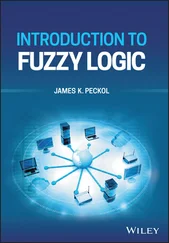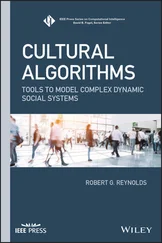For those language learners who are matriculated, the most common needs are in academic reading and writing, although some universities have more extensive programs. An example of a credit-bearing academic reading and composition class is English 101 (composition). In these classes, the goal is to develop learners’ literacy skills, so they develop their academic reading and writing skills for future university success. Students learn to analyze readings through a critical lens and respond in writing to, for example, persuade, explain, compare/contrast, or debate.
Many community colleges are adopting innovative teaching modalities to help ELLs. For example, accelerated linked courses give ELLs the opportunity to study English and a “content area” (interpersonal communication, sociology, history) in two separate, but linked classes. Both instructors work together, overlapping their material in a way that gives students an opportunity to earn credit for multiple courses simultaneously.
Teaching ESL/EFL/ELT at community college and university is a professional position. Opportunities at this instructional level vary by country. These positions are typically competitive to obtain. They may be short-duration or long-term contracts. Often in EFL settings, there are other fringe benefits, such as housing, insurance, round-trip flights, and visa assistance.
Work at private language schools
Private language schools are schools owned and operated by private individuals or corporations. There are private language schools in virtually all countries, with both EFL and ESL settings. They range in size from small family-owned businesses to large, widely known corporations, such as Berlitz. They are outside of the public school system and, therefore, do not have to comply with the same governmental regulations as public schools.
Many students enroll in private language schools for study after work or school hours. Their study at the private language school gives more instruction to extend learners’ proficiency level and build their confidence. Courses tend to be focused on students’ goals and needs. For example, adult students may study intensively to improve their proficiency score on the International English Language Testing System (IELTS) exam ( https://www.ielts.org/en-us), so they may be promoted at work or obtain a new position. Classes tend to be smaller with interaction in speaking, listening, reading, and writing in English as the focus of instruction; however, grammar and vocabulary will also play a role.
Private language schools require different types of qualifications. It is difficult to provide a rule of thumb for the types of qualifications because, depending on the size and quality of the private language school, expectations vary. Some small private language schools may not require any specific qualification. On the other hand, we know of excellent small, family-owned private language schools that require a bachelors’ degree and a TEFL certificate, whereas others may only require a bachelors’ degree. Large private language schools will most likely require a bachelors’ degree and a TEFL certificate or CELTA at the minimum.
TEFL certificates may be obtained through private language schools, who will then employ their graduates, online or from universities. The quality of these TEFL certificates can normally be determined from the duration of the TEFL certificate program and the reputation of the organization. Many online TEFL certificates offer a course of study over 120 hr of instruction. Universities tend to have courses of study with approximately 30–50 semester credits or 90–150 hr of instruction, but the courses are more rigorous.
Newcomers to the field need to be aware of two potentially problematic areas of working with private language schools. First, small, private language schools may not be established, long-standing institutions. They may have operational challenges that employees might experience. The treatment employees may receive may not align with their expectations. For example, many colleagues have reported being asked to go on a “visa run,” which is a round trip outside of the country, so that they can continue to work while holding a tourist visa. By doing so, the private language school does not have to help their educators obtain a work permit/visa. Promises made may not always be kept. It is important to research prior to accepting a position. Second, it has been reported that some of the job postings for private language schools are fraudulent and are designed to obtain the applicant’s name, social security number/personal identification number, passport number, passport image, and/or money. TESOL educators need to ensure that the school that they are considering is a legitimate business and must be cautious about sharing personal information or sending money to a school.
Work in tutoring or one-on-one teaching and online teaching
Tutoring or one-on-one teaching has long been a reliable standby for many TESOL instructors starting out. Instructors post advertisements to attract students for one-on-one instruction focused on the level, goals, and interests of the particular student. Tutoring has found a niche in the online world where opportunities for teaching one-on-one online have exploded in the past 10 years.
Typical one-on-one instruction begins with an assessment of the student’s language abilities to determine what should be the emphasis of instruction. The student’s interests and goals are factored into the establishment of instructional objectives. For example, many students wish to have one-on-one tutoring to develop their conversational skills in a less embarrassing, more personal environment. Instructors create individual lessons and participate in conversational exchanges with the student.
Unless an instructor was employed at an online English language learning corporation that would attract students and collect funds, making a living at one-on-one teaching would require an educator to hustle to find students, develop lessons and assessments, and conduct the business end of the instruction.
Online instruction has become an avenue for some individuals wishing to teach ESL/EFL/ELT. Instructors can find online teaching opportunities through universities, private language schools, or corporations. Some of these organizations have no brick-and-mortar classrooms. In these environments, an instructor can teach students one-on-one or in small groups, who range from children to adults. Classes are usually not mixed age groups though, since instructional choices for one group would not be appropriate for another. The computer interface that connects the instructor to student(s) may be Zoom, Skype, or Google hangouts, a classroom management system (e.g., Blackboard, Desire to Learn, or Canvas), or a platform designed specifically by the organization. Instructional approaches would be different for a group of several people. Instruction online to small groups tends to emphasize reading, listening, and writing. Speaking occurs between the teacher and students, but there may be platforms that allow for students to interact easily with each other.
Online instruction and tutoring tend to be hourly work and wages are based upon the educational background of the individual. For most online companies, an instructor needs at least a bachelors’ degree, but a TEFL certificate or CELTA would increase the likelihood of being hired and higher wages received. It is possible to tutor without any particular credential or teaching preparation, but mistakes can be made and learners may not excel as they should.
Aside from the traditional venues an instructor may work in, TESOL professionals can pursue other options. Large, international corporations with business in many countries hire English language teachers to help employees develop their English skills to enhance corporate communications or comply with governmental regulations. Some governmental entities hire English language professionals to teach English to allow work in English when the individuals speak different native languages. For example, customs agents, nuclear power plant employees, and judges need to be able to communicate with individuals in English. An example of both corporations and governmental entities requiring English language instruction are pilots, navigators, and air traffic controllers, who must speak English to interact with all those flying. In the United States, TESOL professionals have been hired to teach English in prison too. Finally, religious and not-for-profit organizations (such as the Literacy Volunteers of America) also offer English classes for children and adults.
Читать дальше












